“Eating to Gain Muscle”
By Coach Kathleen
We all have different goals when it comes to our health and how we want our bodies to look and function. We might strive for an aesthetic goal, or to simply be more confident and capable. Believe it or not these goals have a lot more in common than we may think. In order to look, feel and perform our best, we have to support our bodies with the nutrients it needs to build a strong, resilient body. When we are in a poor state of health, our bodies will not prioritize building muscle. They will do what is needed to keep us alive, and oftentimes that means breaking down existing muscle, using stored nutrients to support our vital organs.
When we support our bodies with the proper nutrients and fuel, along with the correct stimuli, we will be able to start growing muscle. More muscle mass does not mean we will look like a bodybuilder, unless we specifically try to. In fact our genetics and gender play a large role in deciding what that increase of muscle will look like on our unique bodies. The term “abs are built in the kitchen” can be true for some, while others can be lean and muscular, eating enough to support their bodies and have a rock solid core, without prominent abs. When we talk about building muscle, we need to keep our bio-individuality in mind and accept that how our bodies look with lean body mass will always differ.
One of the keys to building muscle is making sure we are eating enough to support our levels of activity. This includes what we do inside and outside of the gym. To start, eating about 0.7-1g of protein per bodyweight will give us a good base of protein to support maintaining and building lean body mass. Protein sources should be mostly complete sources, containing all of the essential amino acids that we need, such as eggs, grass-fed beef and wild-caught fish. Healthy fats like those found in fish oil, flax oil, egg yolks and almonds help transport nutrients to the places they are needed in our bodies, repairing and replenishing nutrient stores. Carbohydrates are a cofactor in tissue building and everything from starchy sweet potatoes to cruciferous vegetables like broccoli support muscle growth in different ways. Getting in a variety of colorful fruits and vegetables will ensure our bodies get the range of vitamins and minerals needed to boost and maintain those muscle gains.
There are also some dietary choices that can have a negative impact on muscle growth. Hydrogenated oils found in canola, soybean, vegetable and corn oil will slow muscle recovery and growth due to an increase of inflammation. Alcohol consumption can also pose a threat as it depletes nutrients that are necessary for tissue growth. Bleached white products like bread, pasta and other wheat products contain anti-nutrients that impair our digestional health, decreasing our ability to absorb nutrients. Finally, consuming white sugar around workouts increases free radical damage, inflammation, fatigue and can also lead to insulin resistance.
In order to grow muscle beyond our minimum needs for locomotion and survival, we have to create an adaptive need for more muscle. Thinking back to our example of natural bodybuilders, we know that their primary focus is taxing targeted muscle groups to cause hypertrophy, which stimulates muscle growth in order to keep up with demand. Heavier weight training performed weekly will signal to the body a need to build more muscle tissue. Conversely, doing excessive amounts of cardiovascular exercise and avoiding weight training could selectively reduce our muscle mass, as muscle is heavier to move around for long periods of time. By no means must we choose one or the other, but we can certainly take thisi nto account based on our specific aesthetic, performance and long term health goals. Being strong and able to run from predators was certainly something our ancestors relied on for survival. So let’s use the accessibility of a kick-ass gym, nutrient dense foods and information to keep us fit, healthy and lean for the rest of our lives.
Sources:
Benetti, Elisa, et al. “High Sugar Intake and Development of Skeletal Muscle Insulin Resistance and Inflammation in Mice: a Protective Role for PPAR- δ Agonism.” Mediators of Inflammation, Hindawi Publishing Corporation, 2013, www.ncbi.nlm.nih.gov/pmc/articles/PMC3703883/.
Axe, Josh. “How to Eat to Gain Muscle.” Dr. Axe, 29 Nov. 2017, draxe.com/eat-gain-muscle/.
